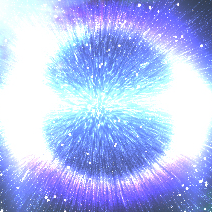Why is the expansion of the Universe accelerating? This question is one of the biggest mysteries faced by cosmologists; it is so puzzling that they finally called what causes the expansion to accelerate dark energy. Nobody knows the nature of this energy, as we have only been able to observe its effects on the structure of the Universe. In the equations of general relativity, the “cosmological constant” represents the Universe’s expansion. Unfortunately, it came with a few problems, namely the cosmological constant problem, and the coincidence problem. Two researchers have now presented a new testable solution to these difficulties.
Physically speaking, the cosmological constant is equivalent to vacuum energy, an underlying background energy that exists in space even when this one is devoid of matter. Unfortunately, there is no known natural way to derive the cosmological constant used in cosmology from particle physics: the cosmological constant predicted by quantum field theories is 1060 to 10120 times bigger than observed. This is the cosmological constant problem.
The coincidence problem implies that we live at a special epoch: today, dark energy density is approximately equal to matter density. The ratio of these two quantities is rapidly changing as the universe expands: at early times the vacuum energy was negligible in comparison to matter and radiation, while at late times matter and radiation are negligible. There is only a brief epoch of the universe’s history during which it would be possible to witness the transition from domination by one type of component to another. Various dark energy models offer a solution to the coincidence problem (quintessence models, for example), but they all require a high degree of fine tuning to match observations.
Cosmologists John Barrow and Douglas Shaw of the University of Cambridge have now proposed a new approach to solve the cosmological constant problems, without any fine tuning involved.
The essence of their new approach is that the bare cosmological constant is promoted from a parameter to a field, making the entire Universe a quantum mechanical wave function. Then, they applied their model to a Universe in which gravity is described by General Relativity. The model explains the time coincidence and cancels out enough of the quantum vacuum repulsion so that vacuum energy can account for the accelerating expansion of the Universe. Their results are matching observations, without any fine tuning: although their model implies that the cosmological constant changes with observation time, it would still appear constant in the observer’s causal past, remaining consistent with a non-evolving cosmological constant (however, another observer causally disconnected from this one would observe a different value).
The researchers’ results will be presented in the upcoming issue of Physical review Letters.
As their model presents the advantage of being falsifiable, the Planck satellite might prove them right or wrong within the next couple of years. At least, this time, cosmologists have something they can test.
References:
– A New Solution of The Cosmological Constant Problems – John D. Barrow, Douglas J. Shaw
- arXiv.org > gr-qc > arXiv:1007.3086 > 19 Jul 2010 (v1), 10 Feb 2011 (v3)
Physical Review Letters (accepted 2011 Feb 09)
– A Testable Solution of the Cosmological Constant and Coincidence Problems – Douglas J. Shaw, John D. Barrow
- Physical Review D 83 043518 (2011 Feb 18) DOI: 10.1103/PhysRevD.83.043518
arXiv.org > gr-qc > arXiv:1010.4262 > 20 Oct 2010 (v1), 10 Feb 2011 (v2)
